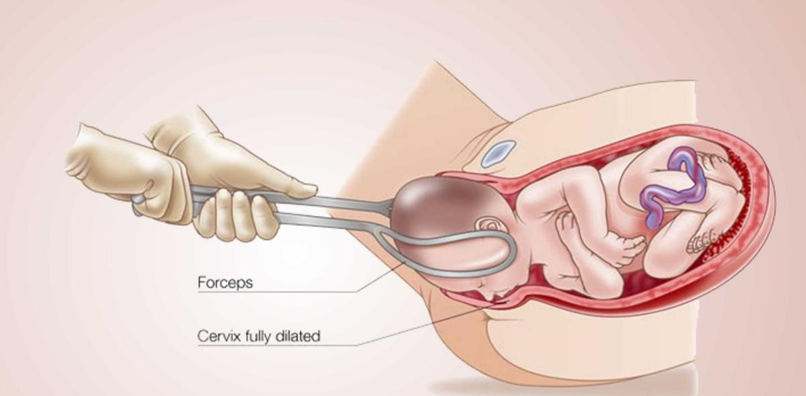A nurse is assessing a newborn following a forceps-assisted birth. Which of the following clinical manifestations should the nurse identify as a complication of this birth method?
Polycythemia
Facial palsy
Bronchopulmonary dysplasia
Hypoglycemia
The Correct Answer is B
Rationale:
A. Polycythemia: Polycythemia, an elevated red blood cell count, is not typically associated with forceps-assisted birth.
B. Facial palsy:
Correct answer. Facial palsy, or weakness or paralysis of facial muscles, can occur as a complication of forceps-assisted birth due to pressure or trauma to the facial nerve during delivery.

C. Bronchopulmonary dysplasia: Bronchopulmonary dysplasia is a lung condition primarily affecting premature infants and is not directly related to the method of delivery.
D. Hypoglycemia: Hypoglycemia, low blood sugar levels, can occur in newborns for various reasons but is not specifically associated with forceps-assisted birth unless there are other complicating factors.
Nursing Test Bank
Naxlex Comprehensive Predictor Exams
Related Questions
Correct Answer is B
Explanation
Rationale:
A. Allowing the medication to reach room temperature is not a specific requirement for administering a dinoprostone insert.
B. Verifying that informed consent is obtained is essential before administering any medication or procedure to ensure the client understands the risks, benefits, and alternatives.
C. Placing the client in a semi-Fowler's position after administration may not be necessary for the use of a dinoprostone insert.
D. Instructing the client to avoid urinary elimination is not necessary for the administration of a dinoprostone insert.
Correct Answer is B
Explanation
Rationale:
A. Polycythemia, an elevated red blood cell count, is not typically associated with forceps- assisted birth.
B. Facial palsy, or facial nerve injury, can occur as a complication of forceps-assisted birth due to pressure on the facial nerves during delivery.
C. Bronchopulmonary dysplasia is a lung condition primarily associated with premature birth and prolonged mechanical ventilation, not forceps-assisted birth.
D. Hypoglycemia may occur in newborns for various reasons but is not specifically associated with forceps-assisted birth unless there are other complicating factors such as maternal diabetes.
Whether you are a student looking to ace your exams or a practicing nurse seeking to enhance your expertise , our nursing education contents will empower you with the confidence and competence to make a difference in the lives of patients and become a respected leader in the healthcare field.
Visit Naxlex, invest in your future and unlock endless possibilities with our unparalleled nursing education contents today
Report Wrong Answer on the Current Question
Do you disagree with the answer? If yes, what is your expected answer? Explain.
Kindly be descriptive with the issue you are facing.
